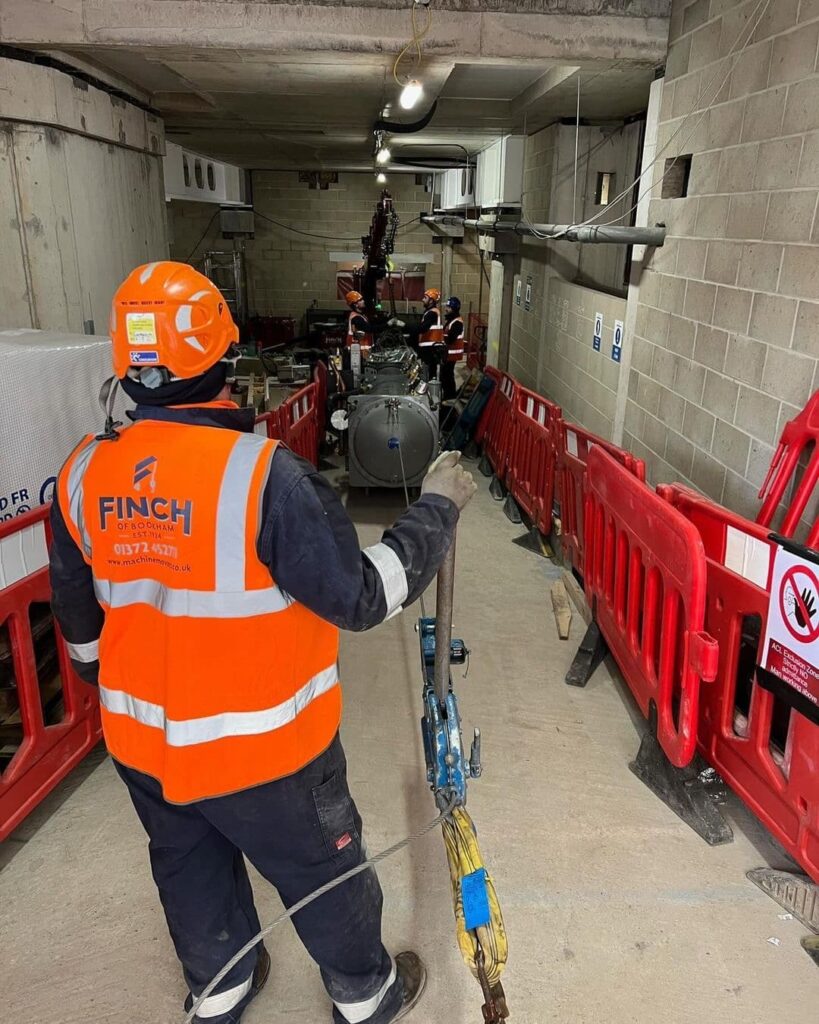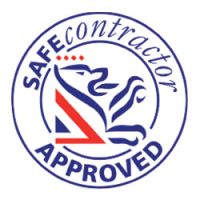Chiller Delivery and Positioning
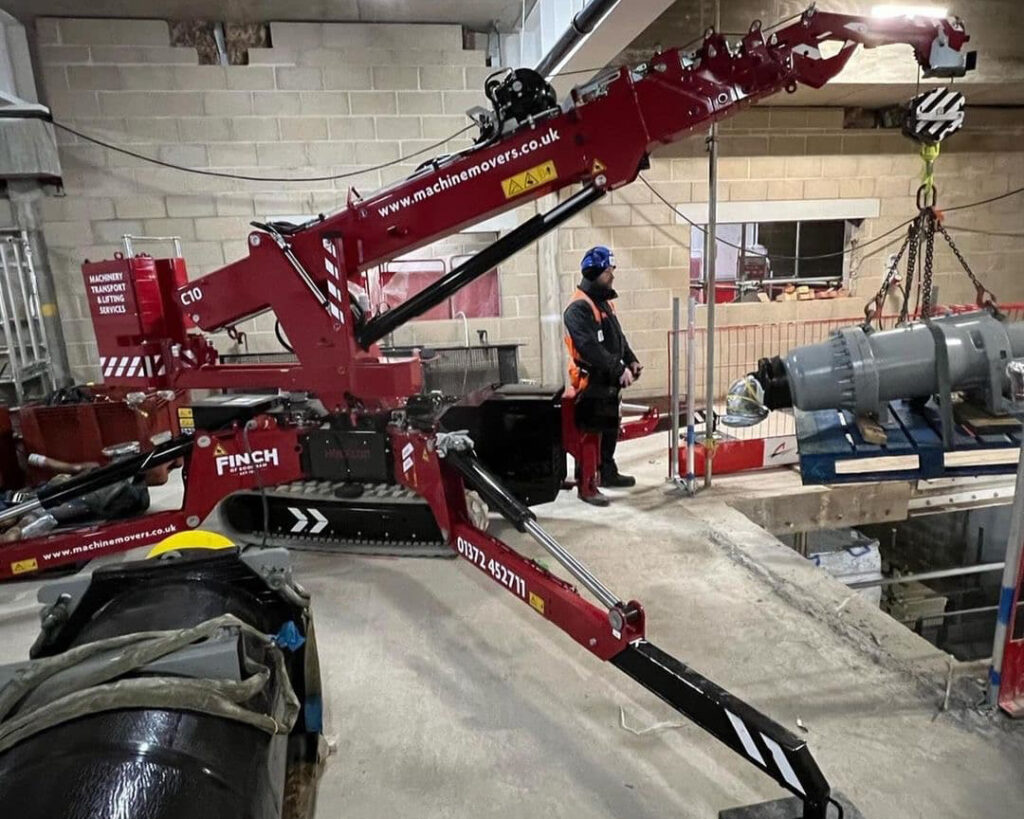
Chiller Delivery and Positioning
Finch of Bookham recently completed a heavy lifting operation, which was both intricate and demanding, requiring precision and coordination. This project chronicles a detailed day in the life of such an operation, from setting up the lorry loader and spider crane to offloading and positioning heavy components, ensuring safety and efficiency throughout the entire process.
Lorry Loader Setup and Initial Lift
The lorry loader vehicle was set up in the pit lane. The hook was positioned over the centre of the load, and the lifting equipment slinger/signaller attached slings to the manufacturer’s lifting points and slings were placed beneath the load and secured using the choke method. Under the instruction of the slinger/signaller, the hook was raised until the slinging arrangement was secure.
Once satisfied with the security, the load was hoisted up clear of the vehicle bed. Final checks were made, and upon satisfaction, the load was slewed from the vehicle and lowered at the site entrance.
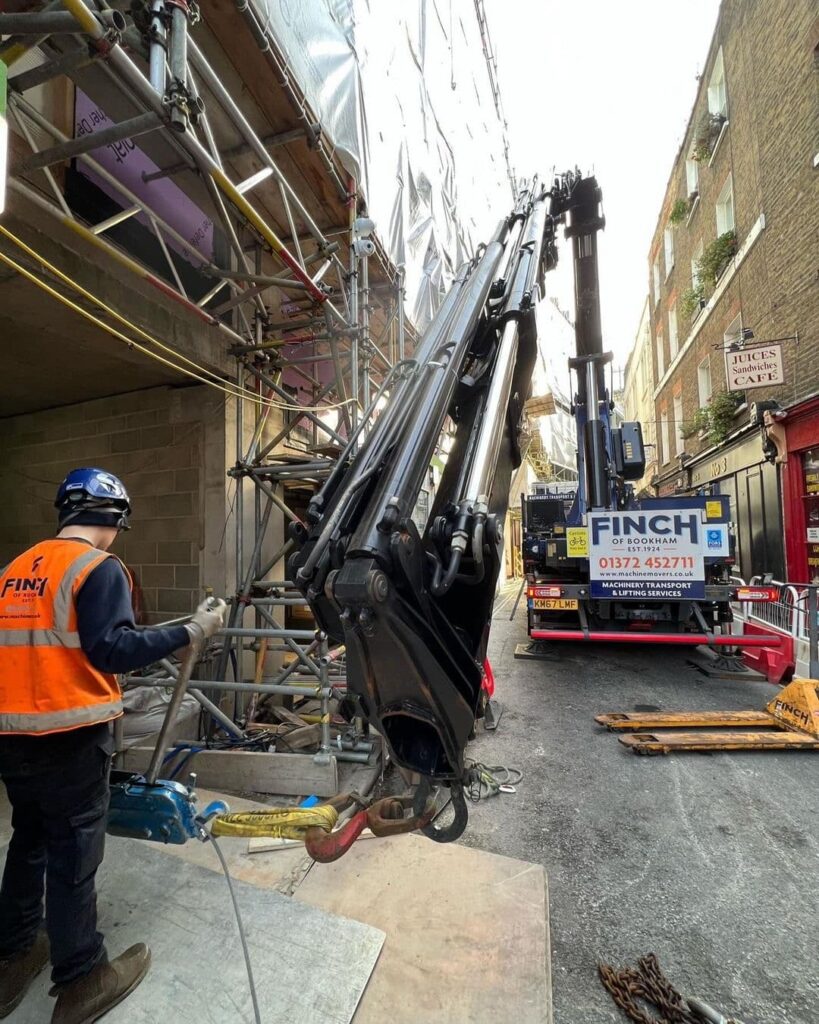
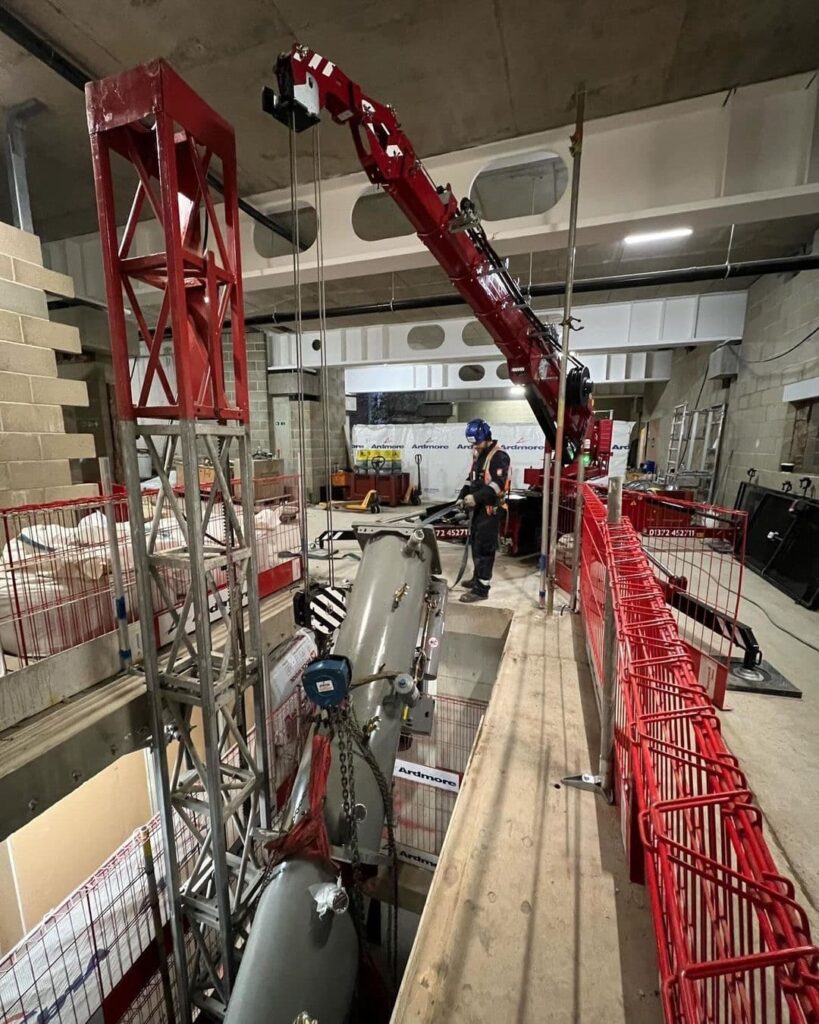
Spider Crane Positioning and Gantry Assembly
The spider crane was driven into the site on tracks and positioned according to the lifting plan, with 400 x 400 outrigger mats placed under each outrigger.
The spider crane hook was placed over the centre of the gantry components. Each component was slung with nylon slings and lowered into the basement individually. The A-frame gantry legs, beams, and lifting equipment were lowered into the basement and erected over each end of the stowed-away goods lift. A 2000kg chain block was attached to each beam.
Chiller Offloading and Final Positioning
The chiller component was offloaded from transport. It was then lowered onto machine skates, trolley and a pallet truck and wheeled into the loading bay. Some control was required on the component so a Tirfor, attached to the lorry loader, was used to lower it into the loading bay.
The spider crane hook was placed over the center of the load (compressor, panel, pallets). The load was slung with nylon slings and attached to the crane hook. The crane hook was raised until the slinging arrangement was secure. Upon satisfaction, the load was lifted clear of the ground. After final checks, and upon further satisfaction, the scaffold handrail was removed, and the load was lowered.
The slings were removed from the spider crane hook, which was then raised to the loading bay. The gantry was wheeled over the component in the goods lift, and slings were attached to the chain block. The load was lifted from the goods hoist, traversed along the beam, and lowered onto a pallet truck at floor level. Finally, the load was wheeled to the chiller room, pending the rebuild process.
This detailed process highlights the precision and coordination required in heavy lifting operations, ensuring safety and efficiency at every step.
